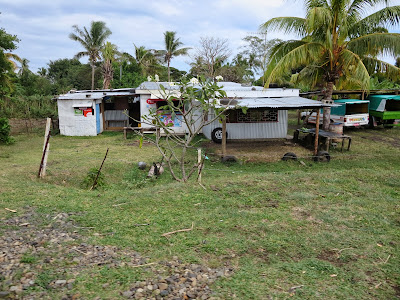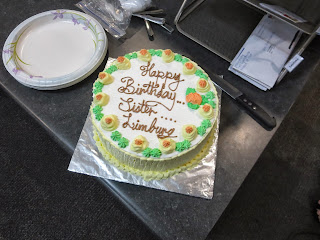Almost half of Fiji is Indian and Diwali is certainly the biggest and the brightest of all Hindu festivals. It's the festival of lights that's marked by four days of celebration, which literally illumines the country with its brilliance, and dazzles all with its joy. Each of the four days in the festival of Diwali is separated by a different tradition, but what remains true and constant is the celebration of life, its enjoyment and goodness.
Historically, the origin
of Diwali can be traced back to ancient India, when it was
probably an important harvest festival. Each day of Diwali has its own tale, legend and myth to
tell. The first day of the festival Naraka Chaturdasi marks the
vanquishing of the demon Naraka by Lord Krishna
and his wife Satyabhama. Amavasya, the second day of Deepawali, marks
the worship of Lakshmi,
the goddess of wealth in her most benevolent mood, fulfilling the wishes of her
devotees. Amavasya also tells the story of Lord Vishnu, who in his dwarf
incarnation vanquished the tyrant Bali, and banished him to hell. Bali was
allowed to return to earth once a year, to light millions of lamps to dispel
the darkness and ignorance, and spread the radiance of love and wisdom. It is
on the third day of Deepawali — Kartika Shudda Padyami that Bali steps
out of hell and rules the earth according to the boon given by Lord Vishnu. The
fourth day is referred to as Yama Dvitiya (also called Bhai Dooj)
and on this day sisters invite their brothers to their homes.
One week before Dewali, we attended an event sponsored by the Fijian Hindu Society. There we were treated to an evening of dance, song and food. Most of the women were wearing the beautiful ‘sari’ or wrap around traditional gown. The food was delicious. I got this photo of a girl all dressed up and she let me take her picture.
A sari is a very long strip of unstitched cloth, which is worn
over a similar colored petticoat. Its length ranges from four to nine meters,
depending on how an individual wants to wear the sari. The blouse worn with it
is also known as Choli.
The most common style of wearing a sari is by draping its one
end around the waist and neatly arranging the other over the shoulder baring
the midriff. However, there are many variations in how women wear this dress in
different states of India. There can also be a lot of variation in the designs
of the choli or blouse of the sari. For instance, for daily wear, the blouse
can be a normal one with quarter or short sleeves. Sleeveless or embroidered
blouses are worn to give a dressy feel. Similarly,
for occasions like wedding and parties, some Indian women also wear backless or
halter-neck blouses with their sari. Women in the armed forces don the sari
with a half-sleeved shirt tucked in at the waist. Sari is a very popular form of
clothing in India. So, one will find various type of the clothing being sold in
the market. Every state of India excels
in manufacturing a certain type of sari. Thus, you will find plain or patterned
georgette saris, heavily golden-zari embroidered zardozi saris, silk sarees
with heavy pallu, and so on. The prices of the saris also vary greatly. The
cost of a sari differs greatly. We have
seen saris in the store with a price of over $450 US while others of under $50. We went shopping after Dewali and found some
beautiful saris discounted for quick sale and bought some up for our
granddaughters to use for Halloween or dress up.
The Monday before Dewali, all the senior missionaries including the mission president and his wife and the temple president and his wife, got together for a FHE dinner and Dewali celebration where we ate curry and had a Hindu Indian Fijian speak to us about Dewali.
 Senior couples at our Dewali celebration
Senior couples at our Dewali celebrationSunday, Nov. 3rd, the biggest day of celebrating, we were invited to our neighbor’s home to eat and enjoy Dewali with them following their time of prayer. It was an amazing cultural experience. Though originally a religious celebration, like Christmas, it has become commercialized. The most noticeable parts are the non-stop fireworks that begin before dark each night and continue until midnight and the lighting of their homes. People will spend hundreds of dollars on fireworks and decorations. Since it is a wet land, there seems to be no restrictions on the size of fireworks for sale. Many set off from homes were like you would see a city do in the USA.

Our neighbor Sarita in her Sari

Pastries made with powdered milk but no flour. These are not baked but shaped in a mold.
 Sarita's husband and son with their kava pot. Kava is a narcotic drink made from pounding a plant and making it into a drink. It is a huge past time in Fiji used in celemonies and social settings.
Sarita's husband and son with their kava pot. Kava is a narcotic drink made from pounding a plant and making it into a drink. It is a huge past time in Fiji used in celemonies and social settings. Here are sore shots of the lights
We celebrated by making snickerdoodles and chocolate chip cookies and taking them to our friends. That was really fun for us. There is a lot of taking around ‘sweets’ here during Dewali much like we do at Christmastime.


 Colored rice decoration made on their porch
Colored rice decoration made on their porch Sarita in her kitchen with our Dewali dinner
Sarita in her kitchen with our Dewali dinner















































 looking out at the bay from the temple block
looking out at the bay from the temple block






















